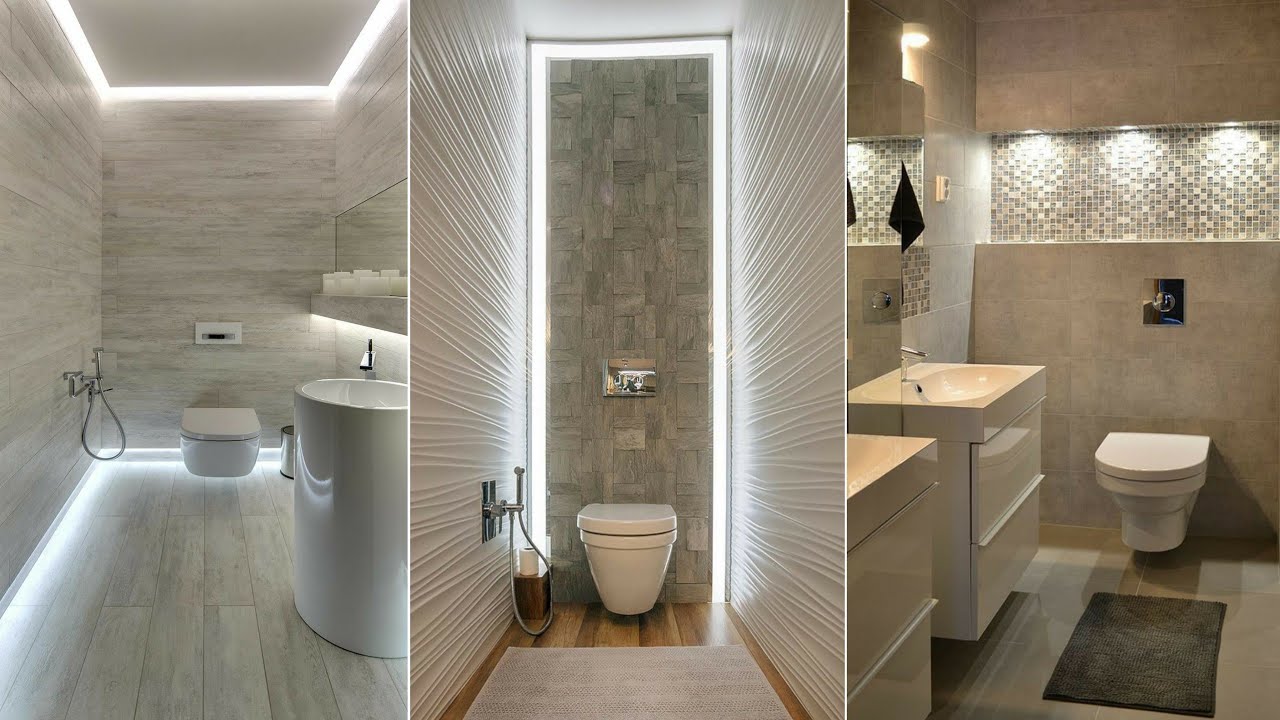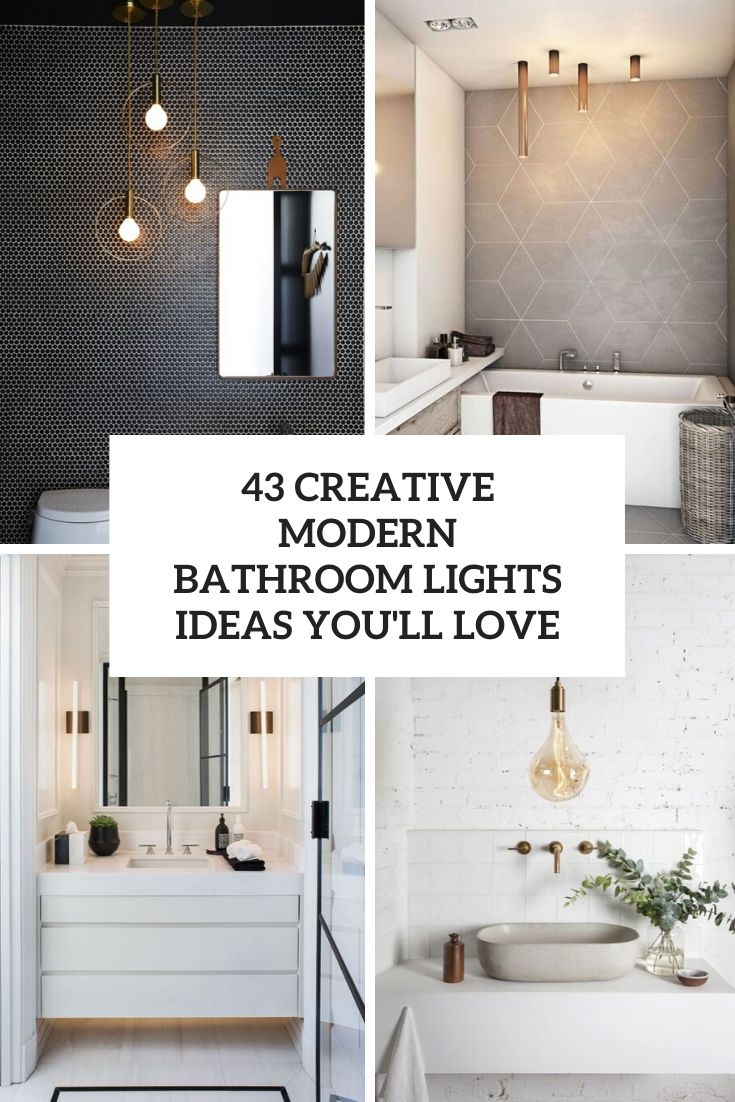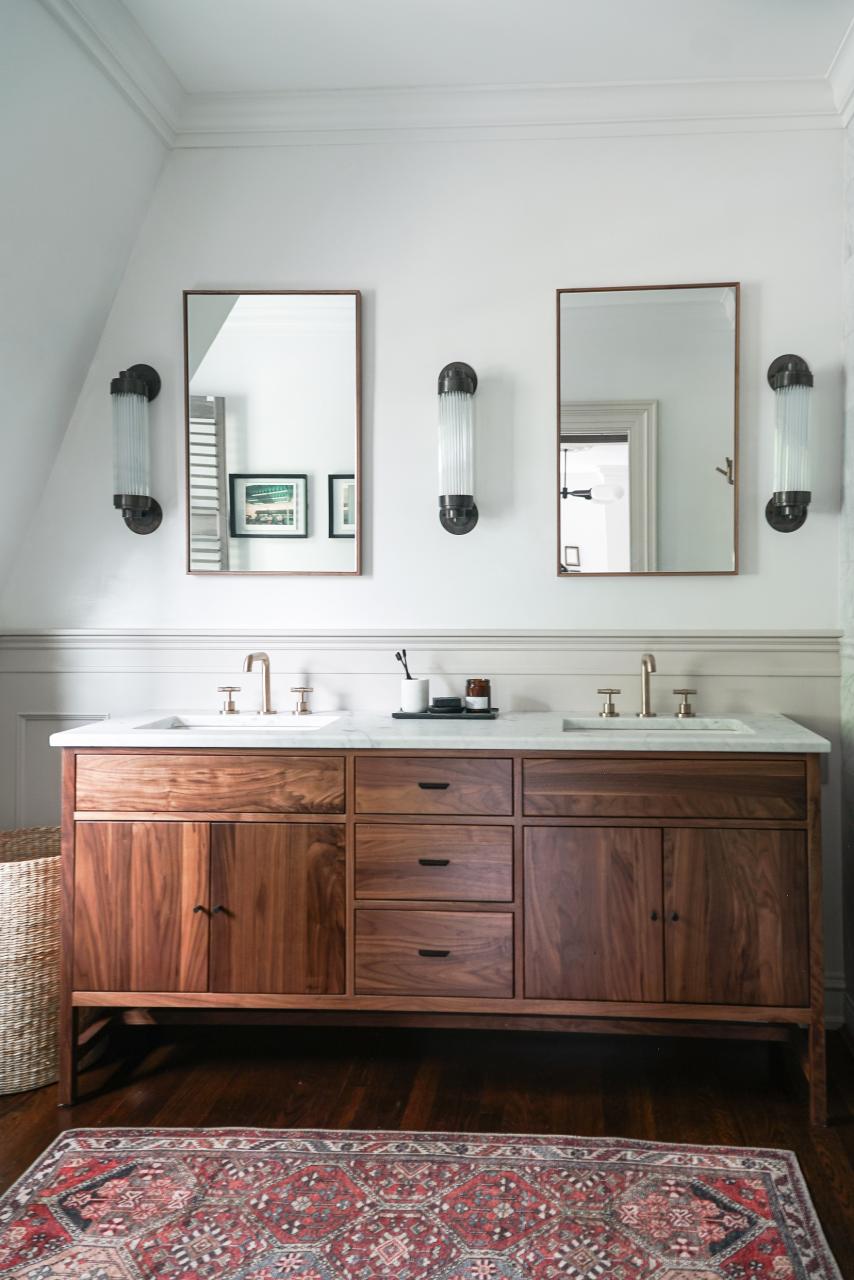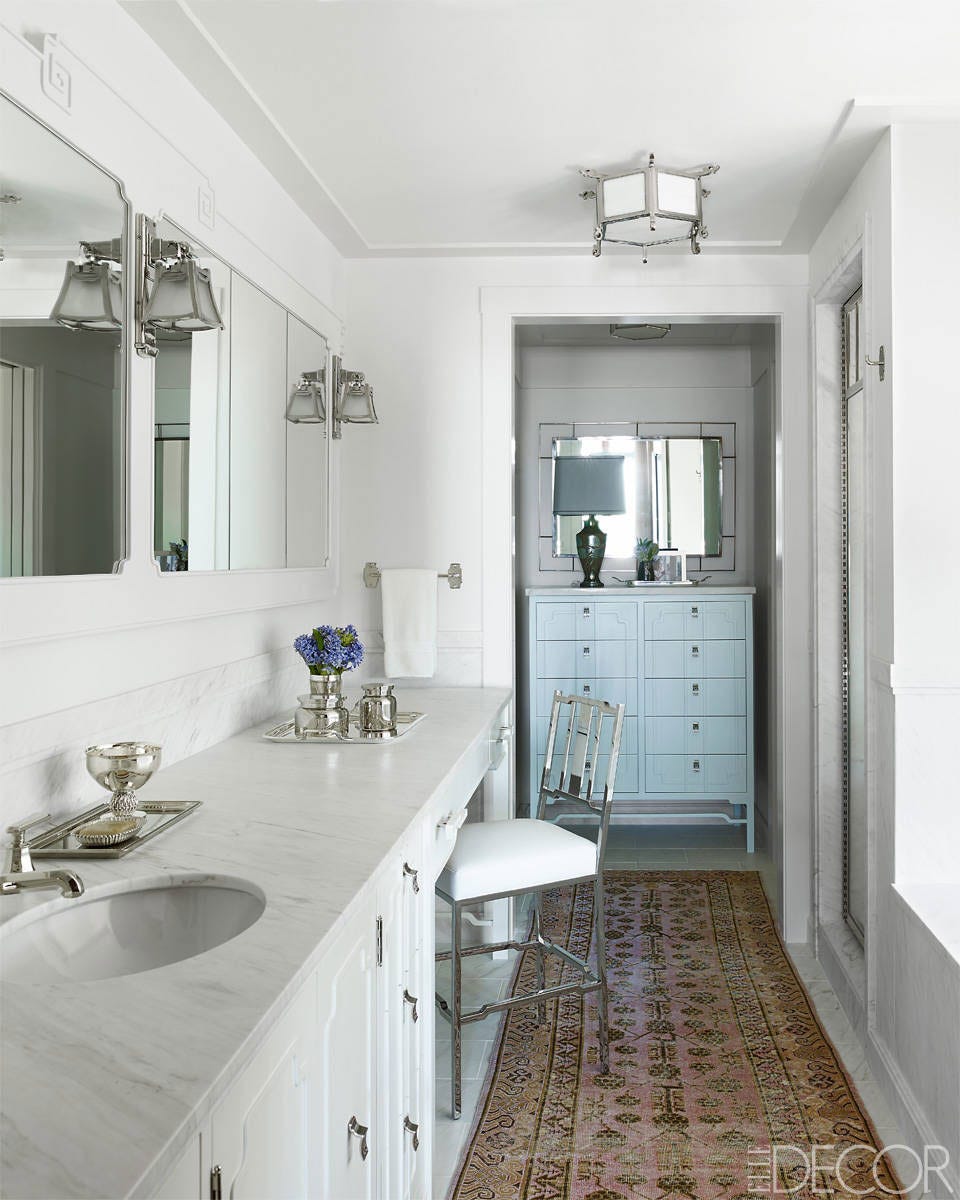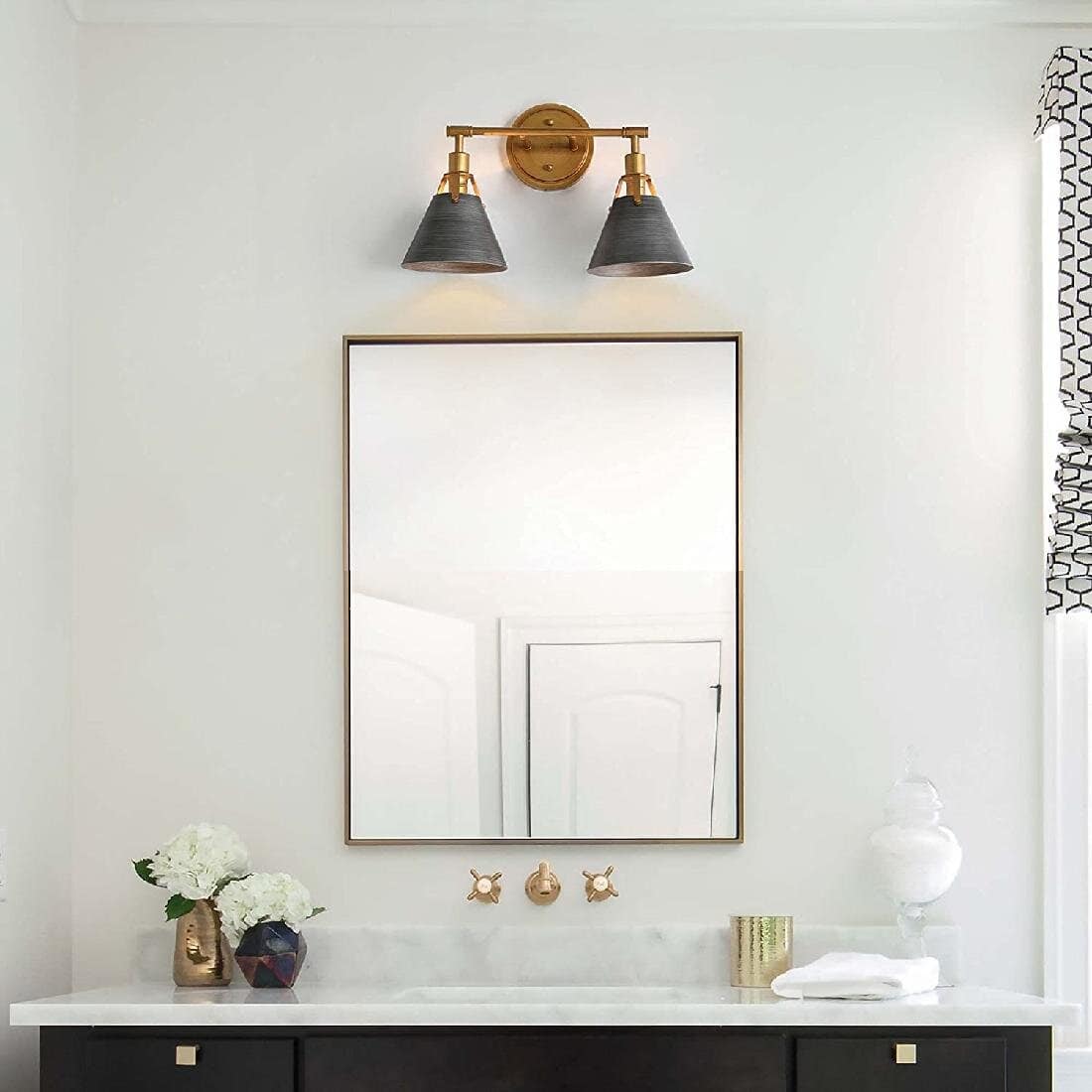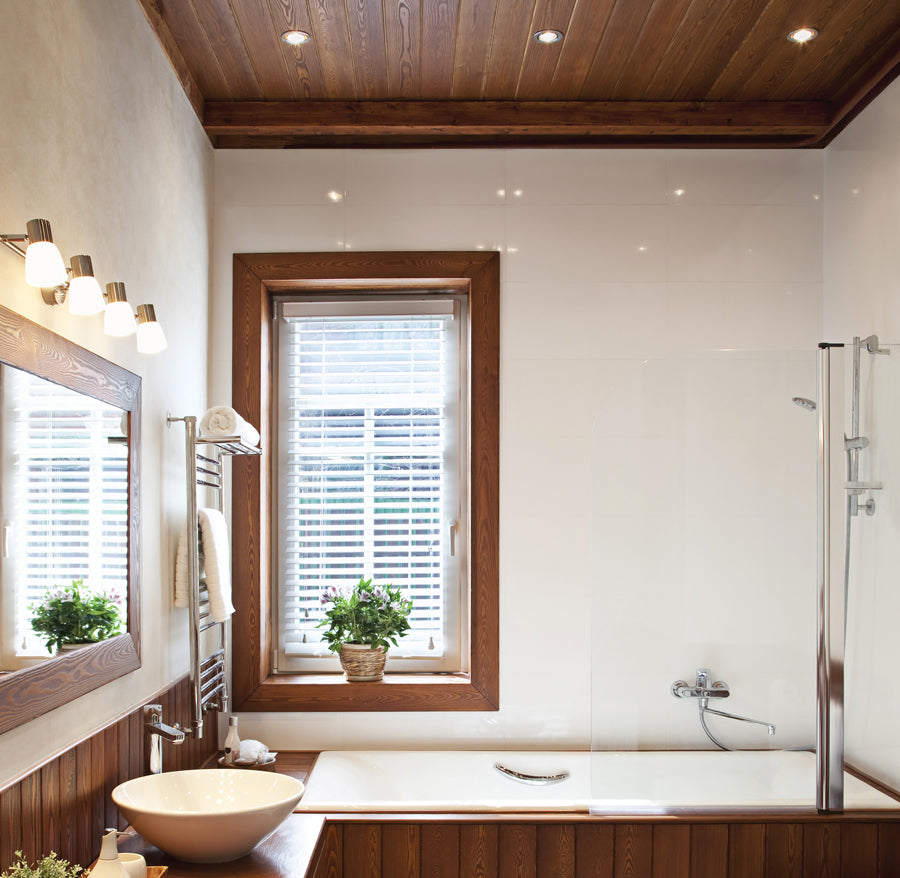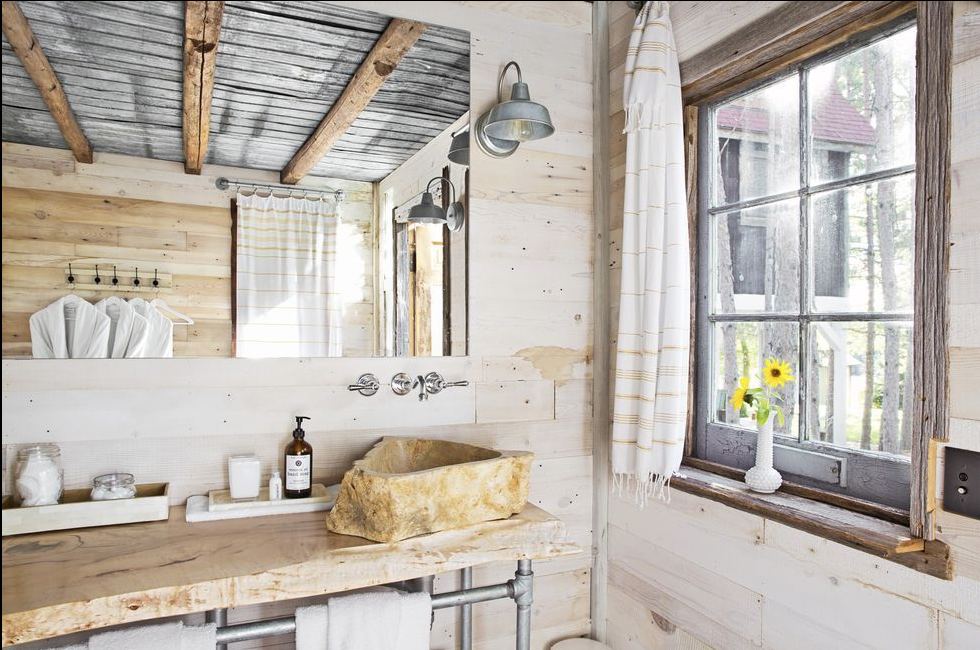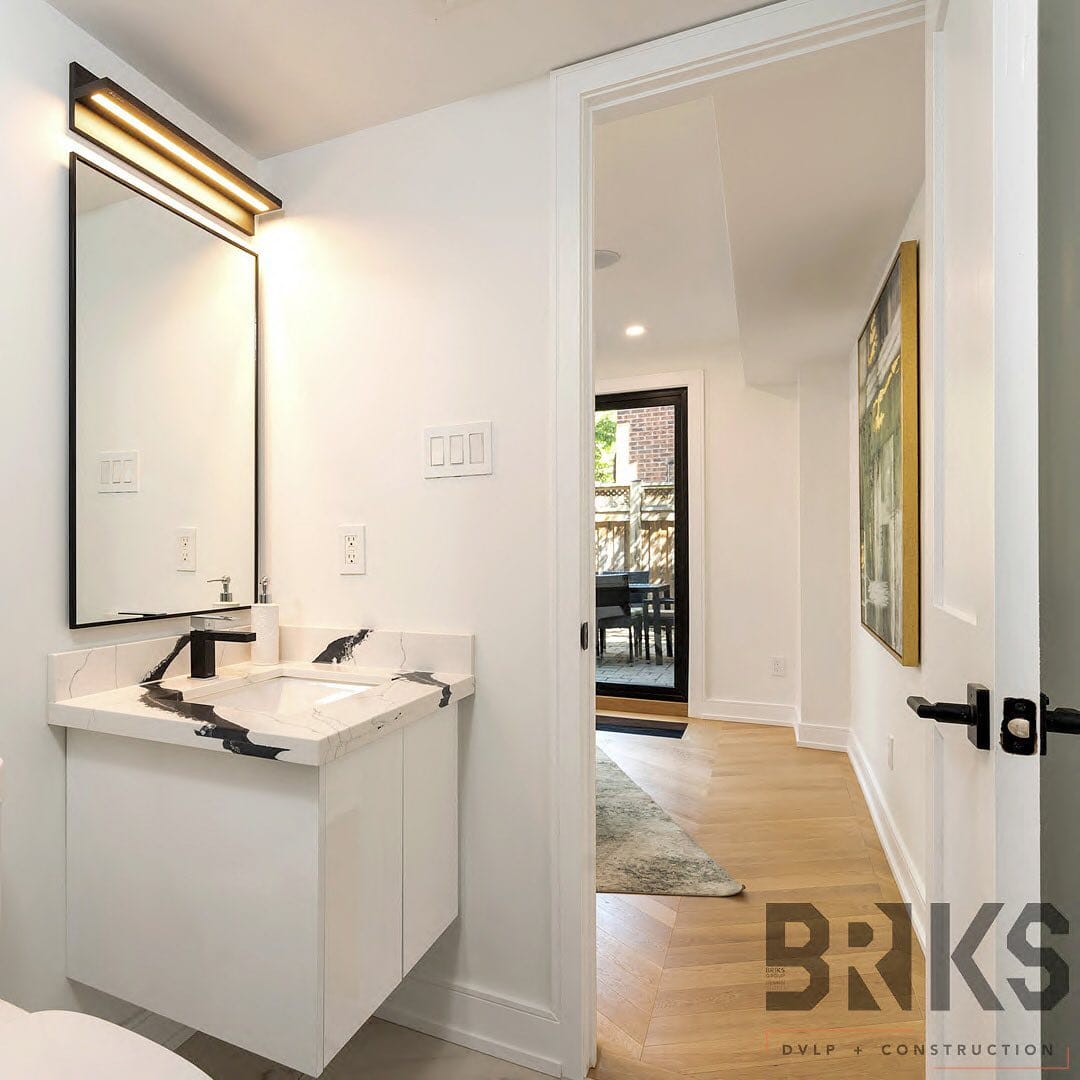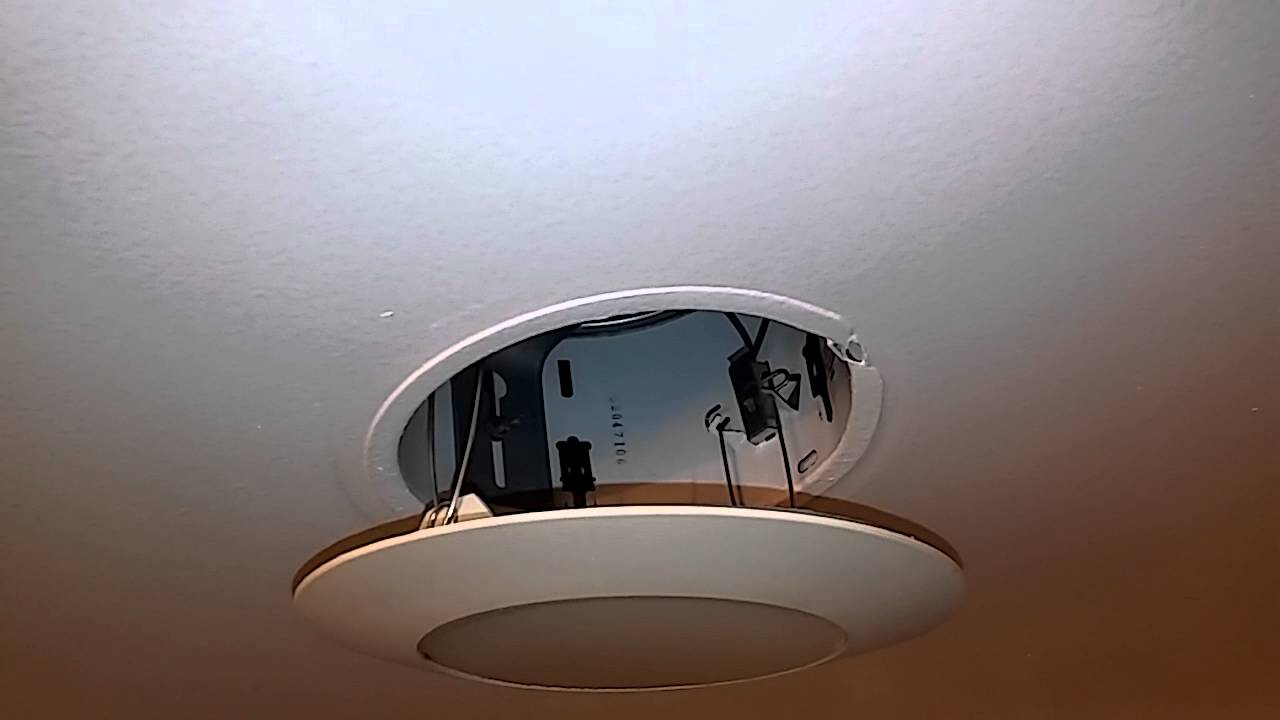Maximizing Natural Light in Compact Spaces
Natural light is one of the most effective ways to brighten up any room, especially small bathrooms. In compact spaces where artificial light can often feel harsh or inadequate, harnessing natural light can make a dramatic difference. let’s discuss different strategies to maximize the use of natural light in small bathrooms, ensuring that the space feels airy, open, and welcoming.
- Emphasize Window Placement and Size: The first step in maximizing natural light in a small bathroom is to pay careful attention to the windows. If you’re in the process of designing or renovating, consider placing the bathroom window in a location that captures the most sunlight throughout the day. Larger windows naturally allow more light in, but if privacy is a concern, frosted or textured glass can be a good compromise. Skylights are another fantastic option, especially if wall space is limited. A well-placed skylight can flood a small bathroom with sunlight, making the space feel much larger than it is.
- Opt for Light-Reflecting Surfaces: To maximize the impact of natural light, it’s important to choose materials that reflect rather than absorb light. High-gloss tiles, light-colored paint, and polished fixtures can all contribute to a brighter bathroom. Consider using white or light pastel colors for walls and cabinetry, as these hues reflect light and enhance the overall brightness of the room. Metallic finishes on faucets, mirrors, and other fixtures can also help bounce light around the space.
- Minimize Window Treatments: While window treatments are essential for privacy, heavy curtains or blinds can block natural light. To strike a balance between privacy and light, opt for minimal window coverings. Sheer curtains, lightweight blinds, or even a simple frosted window film can provide privacy without sacrificing sunlight. If possible, avoid using any window treatments during the day and let the natural light pour in freely.
- Utilize Glass Elements: Incorporating glass elements into your bathroom design can significantly enhance the flow of natural light. Glass shower doors, for instance, allow light to pass through, eliminating the shadowed areas that are often created by opaque shower curtains. Additionally, glass shelves or partitions can maintain the open feel of the space while still serving a functional purpose.
- Keep the Space Uncluttered: Clutter can quickly make a small bathroom feel cramped and dark, obstructing the flow of natural light. To maximize light, keep countertops, shelves, and other surfaces as clear as possible. Consider using built-in storage solutions to keep items out of sight. An organized and uncluttered bathroom not only feels larger but also allows light to move freely throughout the space.
- Embrace the Outdoors: If your small bathroom has a view of greenery or outdoor space, embrace it! The connection with the outdoors can enhance the feeling of space and bring a touch of nature inside. Consider planting greenery just outside your bathroom window, or strategically placing plants that thrive in low light within the bathroom. This approach not only brightens the space but also adds a refreshing, natural element to your bathroom.
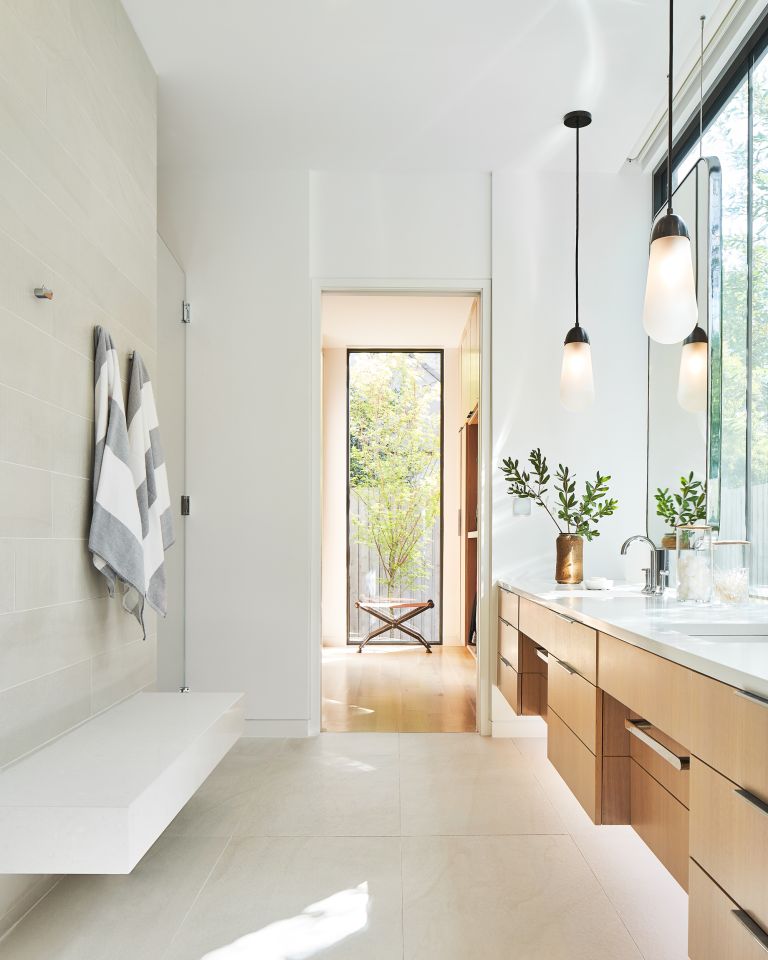
Choosing the Right Overhead Lighting for Small Bathrooms
Overhead lighting plays a crucial role in defining the ambiance of a bathroom, particularly in small spaces where every detail counts. The right overhead lighting can illuminate the room effectively, enhance its design, and make it feel more spacious. I will guide you through the process of selecting the ideal overhead lighting for a small bathroom, ensuring it meets both functional and aesthetic needs.
Consider the Overall Style of the Bathroom
The first step in choosing overhead lighting is to consider the overall style of your bathroom. Whether you have a modern, minimalist, traditional, or eclectic design, the lighting fixture should complement and enhance this style. For modern bathrooms, sleek and simple fixtures with clean lines work best. For traditional or vintage bathrooms, consider chandeliers or ornate flush-mount fixtures that add a touch of elegance.
Assess the Lighting Needs of the Space
Understanding the specific lighting needs of your small bathroom is essential. Consider the size of the space, the color of the walls and fixtures, and the amount of natural light the bathroom receives. If the bathroom lacks windows or has darker walls, you might need a fixture that provides more lumens to adequately light the space. In contrast, a bathroom with ample natural light might only require a subtle overhead light to enhance the ambiance.
Opt for Space-Saving Fixtures
In small bathrooms, where space is at a premium, the size and scale of your lighting fixture are important. Opt for space-saving overhead lights that don’t overwhelm the room. Flush-mount or semi-flush-mount fixtures are excellent choices, as they sit close to the ceiling and don’t take up much visual space. Recessed lighting is another great option, as it provides ample light without intruding into the room.
Choose the Right Bulb Type and Wattage
The type of bulb and its wattage can significantly impact the effectiveness of your overhead lighting. LED bulbs are a popular choice due to their energy efficiency, long lifespan, and versatility in color temperature. For a small bathroom, a bulb with a warm white or daylight color temperature (around 2700K to 3000K) is ideal, as it provides a soft, inviting glow without being too harsh. The wattage should be appropriate for the size of the room; a small bathroom typically requires between 75 to 100 watts of light.
Incorporate Dimmable Lighting
Adding a dimmer switch to your overhead lighting can provide flexibility in a small bathroom. Dimmable lighting allows you to adjust the brightness according to your needs, whether you want bright light for tasks like shaving or applying makeup, or a softer light for a relaxing bath. This versatility makes dimmable lighting an excellent choice for small spaces, where multipurpose functionality is key.
Consider Additional Layers of Light
While overhead lighting is essential, it’s also important to consider adding additional layers of light to fully illuminate the bathroom. This might include task lighting around the vanity or accent lighting to highlight architectural features or artwork. Combining overhead lighting with other light sources can create a more balanced and inviting atmosphere, ensuring that the small space is well-lit from all angles.
Task Lighting: Enhancing Functionality Without Clutter
Task lighting is crucial in any bathroom, but it’s especially important in small bathrooms where every inch of space must be utilized efficiently. The right task lighting ensures that daily activities such as shaving, makeup application, and grooming are performed with ease and precision. Let’s find out how to incorporate effective task lighting into a small bathroom without adding clutter or compromising on style.
Focus on the Vanity Area
The vanity area is where most bathroom tasks are performed, making it the prime spot for task lighting. Installing sconces on either side of the mirror at eye level is one of the most effective ways to eliminate shadows on the face and provide even lighting for grooming tasks. If space is limited, consider wall-mounted or integrated lighting solutions that don’t encroach on valuable counter space.
Incorporate Under-Cabinet Lighting
Under-cabinet lighting is a clever way to add task lighting in a small bathroom without contributing to clutter. This type of lighting is particularly useful in bathrooms with storage cabinets or shelves. By installing LED strip lights or puck lights under cabinets, you can illuminate countertops or the floor, making it easier to see what you’re doing while keeping the space free from additional fixtures.
Use Adjustable Fixtures
Flexibility is key in a small bathroom, and adjustable task lighting can provide the adaptability needed to accommodate various tasks. Consider installing adjustable wall-mounted lights or vanity lights that can be tilted or swiveled to direct light exactly where it’s needed. This feature is particularly useful in small bathrooms where lighting needs may change depending on the task at hand.
Avoid Over-Illumination
While it’s important to have sufficient task lighting, over-illumination can be a problem in small bathrooms. Too much light can create harsh shadows or glare, making the space feel uncomfortable. To avoid this, choose lighting fixtures that offer the right balance of brightness and warmth. Consider using dimmable bulbs or adding a dimmer switch to your task lighting so that you can adjust the intensity as needed.
Integrate Lighting with Mirrors
Mirrors with integrated lighting are a fantastic solution for small bathrooms. These mirrors come with built-in LED lights around the edges or behind the mirror, providing even, shadow-free illumination. This dual-purpose design saves space and creates a sleek, modern look. It’s an excellent way to add task lighting without the need for additional fixtures, keeping the bathroom uncluttered and functional.
Consider Motion-Activated Lighting
Incorporating motion-activated lighting can add a layer of convenience and efficiency to your small bathroom. These lights automatically turn on when you enter the room and turn off when you leave, ensuring that the bathroom is always well-lit when needed without the need for switches. This is particularly useful for late-night visits, where you might want just enough light to navigate without fully waking up.
The Magic of Mirrors: Amplifying Light in Tiny Bathrooms
Mirrors are not just functional elements in a bathroom; they are powerful tools for amplifying light and making small spaces feel larger. In a compact bathroom, the strategic use of mirrors can significantly enhance both the lighting and the overall perception of space. Below are different ways to use mirrors to brighten and open up a small bathroom.
Position Mirrors to Reflect Natural Light
One of the simplest and most effective ways to use mirrors in a small bathroom is to position them to reflect natural light. If your bathroom has a window, place a mirror directly across from it to bounce the light around the room. This reflection not only increases the amount of light but also creates the illusion of additional windows, making the space feel more open and airy.
Opt for Large Mirrors to Maximize Impact
In small bathrooms, bigger ones are often better when it comes to mirrors. A large mirror can make a small space feel twice as big by reflecting more light and creating a sense of depth. Consider installing a mirror that spans the entire length of the vanity or even a full-wall mirror. This expansive surface will capture and reflect light from all angles, making the bathroom feel much larger than it is.
Use Mirrored Cabinets for Double Functionality
Mirrored cabinets serve a dual purpose in small bathrooms by providing storage while also reflecting light. These cabinets are particularly useful in small spaces where every inch counts. They can be installed above the vanity or in other strategic locations to enhance the light while keeping bathroom essentials neatly tucked away. For a seamless look, consider recessed mirrored cabinets that sit flush with the wall.
Consider a Mirror Gallery Wall
For a more creative approach, consider a mirror gallery wall. This involves arranging multiple mirrors of different shapes and sizes on one wall. This not only adds a decorative element to the bathroom but also helps to distribute light throughout the space. The varied reflections create visual interest while making the bathroom feel brighter and more dynamic.
Use Backlit Mirrors for a Modern Touch
Backlit mirrors are a popular choice for modern bathrooms, offering both functionality and style. These mirrors have built-in LED lights around the edges, which provide even, soft illumination without casting harsh shadows. The backlighting creates a floating effect, which adds depth to the wall and enhances the overall brightness of the room. This type of mirror is particularly effective in small bathrooms, where it can serve as both a light source and a statement piece.
Don’t Forget About Mirrored Accessories
In addition to large mirrors, small mirrored accessories can also play a role in amplifying light in a small bathroom. Items such as mirrored trays, soap dispensers, or picture frames can catch and reflect light, contributing to the overall brightness of the room. These subtle touches can make a big difference in how light is distributed throughout the space, adding to the sense of openness and lightness.
Incorporating Accent Lighting for a Stylish Touch
Accent lighting is a key element in bathroom design that adds a stylish touch while enhancing the overall ambiance. In a small bathroom, well-placed accent lights can highlight architectural features, create focal points, and add warmth to the space. Let’s see different ways to incorporate accent lighting into a small bathroom to elevate its style and functionality.
Highlight Architectural Features
Accent lighting can be used to draw attention to specific architectural features in a small bathroom, such as a unique tile pattern, an alcove, or a decorative ceiling. Installing LED strip lights along the baseboards, around niches, or under floating vanities can create a subtle glow that highlights these features without overwhelming the space. This type of lighting adds depth and dimension, making the bathroom feel more sophisticated and inviting.
Add a Statement Light Fixture
A statement light fixture can serve as both a functional light source and a piece of art in a small bathroom. Consider installing a small chandelier, a pendant light, or a sculptural wall sconce to add a touch of luxury and personality to the space. The key is to choose a fixture that complements the overall design of the bathroom while providing adequate light. A statement fixture not only illuminates but also becomes a focal point, elevating the entire room’s aesthetic.
Use Recessed Spotlights for a Clean Look
Recessed spotlights are a great way to add accent lighting in a small bathroom without cluttering the ceiling or walls. These lights can be strategically placed to highlight specific areas, such as a piece of artwork, a plant, or a stylish tile backsplash. The clean, unobtrusive design of recessed spotlights allows them to blend seamlessly into the ceiling, providing focused illumination where it’s needed most.
Consider Color-Changing LED Lights
For a more dynamic and customizable lighting solution, consider incorporating color-changing LED lights. These lights can be installed under cabinets, around mirrors, or along the baseboards to create different moods and atmospheres. For example, a cool blue light can add a refreshing, spa-like feel, while a warm amber light creates a cozy, relaxing environment. The ability to change colors and brightness levels adds a fun and versatile element to your small bathroom.
Integrate Lighting into Shelving or Niches
If your small bathroom has built-in shelves or niches, consider integrating lighting into these areas. LED strip lights or small puck lights can be installed along the edges or inside the niches to illuminate decorative items, toiletries, or towels. This approach not only adds a stylish touch but also enhances the functionality of the space by making it easier to find items stored in these areas.
Illuminate the Floor for a Unique Effect
Floor lighting is an innovative way to incorporate accent lighting into a small bathroom. Installing LED lights along the baseboards or under the vanity can create a soft glow that illuminates the floor and adds a unique, contemporary touch. This type of lighting is especially effective in bathrooms with tiled or stone floors, as it highlights the texture and pattern of the material. Floor lighting not only enhances the design but also serves a practical purpose by providing gentle illumination for nighttime use.
Space-Saving Fixtures: Finding the Perfect Fit
In a small bathroom, every inch of space matters, and choosing the right fixtures is crucial for both functionality and aesthetics. Space-saving fixtures are designed to maximize the use of available space without compromising on style or performance. Below are various types of space-saving fixtures that can help you create a more efficient and visually appealing small bathroom.
Opt for Wall-Mounted Fixtures
Wall-mounted fixtures are a smart choice for small bathrooms because they free up valuable floor space and create a more open, uncluttered look. Consider wall-mounted sinks, toilets, and vanities that are attached directly to the wall, leaving the floor area beneath them open. This not only makes the bathroom feel larger but also makes cleaning easier. Wall-mounted fixtures are available in a variety of styles, so you can find options that suit your design preferences.
Choose Compact or Corner Sinks
A compact or corner sink is a great space-saving solution for small bathrooms. These sinks are designed to fit into tight spaces, making them ideal for bathrooms where space is limited. Corner sinks, in particular, make use of often underutilized corners, freeing up wall space for other fixtures or storage. Despite their small size, compact sinks can still offer ample functionality and can be paired with sleek, wall-mounted faucets to save even more space.
Install a Space-Saving Bathtub or Shower
If your small bathroom includes a bathtub or shower, consider space-saving options that maximize the use of the available area. A corner shower stall or a curved shower enclosure can make the most of a tight corner without encroaching on the rest of the bathroom. For those who prefer a bathtub, a smaller, deep soaking tub can provide the luxury of a bath without taking up excessive space. Sliding glass shower doors are another space-saving choice, as they don’t require clearance to open.
Use a Slimline Vanity
A slimline vanity is an excellent choice for small bathrooms, offering storage and counter space without overwhelming the room. These vanities are narrower than standard models, making them ideal for tight spaces. Despite their compact size, slimline vanities can still provide sufficient storage for bathroom essentials. To further save space, consider a vanity with open shelving or built-in storage solutions, such as drawers or cubbies, to keep items organized and accessible.
Consider a Tankless Toilet
Tankless toilets are another space-saving option for small bathrooms. Unlike traditional toilets, which have a bulky tank that stores water, tankless toilets use a high-pressure valve to flush directly from the water supply. This design eliminates the need for a tank, allowing the toilet to sit closer to the wall and free up additional space. Tankless toilets are also more efficient in terms of water usage, making them an eco-friendly choice.
Invest in Multi-Functional Fixtures
Multi-functional fixtures are a great way to save space in a small bathroom while still meeting your needs. For example, a vanity mirror with built-in storage or a medicine cabinet can serve dual purposes, reducing the need for additional storage furniture. Another option is a showerhead with an integrated shelf or a towel bar with hooks for added functionality. These multi-functional fixtures not only save space but also help keep the bathroom organized and clutter-free.
Energy-Efficient Lighting Solutions for Small Bathrooms
Energy efficiency is an important consideration in any room, but it’s particularly crucial in small bathrooms where lighting plays a significant role in both functionality and ambiance. Choosing energy-efficient lighting solutions not only reduces your environmental impact but also lowers your utility bills. Here are several energy-efficient lighting options that are perfect for small bathrooms, combining sustainability with style.
Opt for LED Lighting
LED (Light Emitting Diode) lighting is one of the most energy-efficient options available for small bathrooms. LEDs use significantly less energy than traditional incandescent bulbs and have a much longer lifespan, which means you’ll save money on both energy costs and replacement bulbs. In addition to their efficiency, LEDs are available in a wide range of color temperatures, from warm white to daylight, allowing you to customize the lighting to suit your bathroom’s design.
Use Motion Sensors for Efficiency
Installing motion sensors in your small bathroom can help reduce energy consumption by ensuring that lights are only on when needed. Motion sensors automatically turn the lights on when someone enters the room and off when the room is unoccupied, preventing lights from being left on accidentally. This is particularly useful in households with children or guests who may forget to turn off the lights.
Install Dimmable Lighting
Dimmable lighting is another excellent way to increase energy efficiency in a small bathroom. By adjusting the brightness of the lights, you can reduce energy usage during times when full lighting is not necessary. For instance, you might want bright lighting for tasks like shaving or applying makeup, but softer lighting for a relaxing bath or nighttime visits. Dimmable LEDs are especially efficient, as they consume even less energy when dimmed.
Choose Energy Star-Rated Fixtures
When selecting lighting fixtures for your small bathroom, look for products with the Energy Star label. Energy Star-rated fixtures meet strict energy efficiency guidelines set by the U.S. Environmental Protection Agency, ensuring that they use less energy and produce less heat than standard fixtures. These fixtures are available in a variety of styles, so you don’t have to sacrifice design for efficiency.
Incorporate Natural Light with Skylights
In addition to artificial lighting, consider incorporating natural light to reduce energy usage in your small bathroom. Skylights are a great way to bring in natural light without sacrificing privacy. During the day, skylights can provide enough light to illuminate the entire bathroom, reducing the need for electric lighting. For added efficiency, choose a skylight with a low-emissivity (Low-E) coating, which helps regulate the temperature by blocking heat in the summer and retaining warmth in the winter.
Use Timers or Smart Lighting Systems
Timers and smart lighting systems are excellent tools for increasing energy efficiency in your small bathroom. Timers can be set to automatically turn lights off after a certain period, while smart lighting systems allow you to control your lights remotely via a smartphone app. These systems can be programmed to adjust the lighting based on the time of day, occupancy, or even your daily routine, ensuring that lights are only on when they’re needed.
Common Mistakes to Avoid
Overlooking the Importance of Layers
One of the most common mistakes when lighting a small bathroom is relying on a single light source. A single overhead light can create harsh shadows and leave some areas of the bathroom underlit. To avoid this, make sure to incorporate multiple layers of light, including task lighting, ambient lighting, and accent lighting. This approach ensures that the entire bathroom is evenly illuminated and creates a more balanced and welcoming atmosphere.
Choosing Fixtures That Are Too Large
In a small bathroom, it’s important to choose lighting fixtures that are appropriately sized for the space. Large, bulky fixtures can overwhelm a small room and make it feel cramped. Instead, opt for space-saving fixtures such as flush-mount lights, wall sconces, or recessed lighting. These options provide ample light without taking up valuable space or drawing too much attention away from other design elements.
Ignoring Color Temperature
The color temperature of your lighting can have a big impact on the overall feel of your bathroom. Choosing the wrong color temperature can result in lighting that is too harsh or too dim. For small bathrooms, it’s generally best to use lighting with a warm white or neutral color temperature (around 2700K to 3000K) to create a cozy, inviting atmosphere. Avoid using lights that are too cool or blue-toned, as they can make the bathroom feel cold and uninviting.
Forgetting About Dimmer Switches
Not installing dimmer switches is a missed opportunity for flexibility and energy savings. Dimmer switches allow you to adjust the brightness of your bathroom lighting according to your needs, whether you’re getting ready for the day or winding down in the evening. This not only improves the functionality of the space but also helps reduce energy consumption by allowing you to use only as much light as you need.
Overlooking Energy Efficiency
In the quest for the perfect lighting design, it’s easy to overlook energy efficiency. However, choosing energy-efficient lighting solutions is not only better for the environment but also helps reduce your utility bills. Opt for LED bulbs, Energy Star-rated fixtures, and consider installing motion sensors or timers to ensure that lights are only on when needed. Incorporating natural light through windows or skylights can also reduce the reliance on artificial lighting.
Neglecting Mirror Placement
Mirrors are a powerful tool for enhancing light in a small bathroom, but they are often placed without considering their impact on lighting. Positioning a mirror across from a window or light source can amplify light and make the space feel larger. Conversely, placing a mirror in a poorly lit area can result in a dark, uninviting bathroom. Consider the placement of mirrors carefully to maximize their ability to reflect light and open up the space.
How can I make a small bathroom feel larger with lighting?
To make a small bathroom feel larger, focus on maximizing natural light, using large mirrors, and incorporating multiple layers of lighting. Avoid using overly bright or harsh lights, and instead opt for warm, even lighting that creates a cozy atmosphere. Strategic placement of mirrors and reflective surfaces can also help to bounce light around the room, making it feel more spacious.
What type of lighting is best for a small bathroom?
The best lighting for a small bathroom is a combination of ambient, task, and accent lighting. LED lights are a great choice due to their energy efficiency and long lifespan. Warm white or neutral light bulbs provide a welcoming glow without being too harsh. Consider using dimmable lights for added flexibility, and don’t forget to incorporate natural light whenever possible.
Can I use chandeliers in a small bathroom?
Yes, you can use a chandelier in a small bathroom, but it’s important to choose one that is appropriately sized for the space. A small, delicate chandelier can add a touch of elegance without overwhelming the room. Ensure that it is hung high enough to avoid obstructing the flow of the space, and complement it with other types of lighting to create a balanced look.
How do I choose the right color temperature for bathroom lighting?
When choosing the color temperature for bathroom lighting, consider the overall feel you want to create. Warm white (2700K-3000K) is ideal for creating a cozy, inviting atmosphere, while neutral white (3500K-4100K) provides a clean, bright light that is good for task-oriented spaces. Avoid cool white or daylight bulbs, as they can make the bathroom feel sterile and cold.
What are the benefits of using LED lights in a small bathroom?
LED lights offer numerous benefits for small bathrooms, including energy efficiency, a long lifespan, and versatility in color temperature. LEDs consume less power than traditional incandescent bulbs, which helps reduce energy bills. They also generate less heat, making them safer for small spaces. Additionally, LEDs are available in a wide range of styles, from recessed lights to vanity bulbs, making them a versatile option for any bathroom design.
How can I incorporate natural light into a small bathroom with no windows?
If your small bathroom doesn’t have windows, you can still incorporate natural light by installing a skylight or solar tube. Skylights bring in direct sunlight from above, brightening the space naturally. Solar tubes are a more compact option that channels sunlight from the roof to the bathroom, creating the effect of a window. For bathrooms with no possibility of natural light, using light-colored walls, reflective surfaces, and strategically placed mirrors can help simulate the feel of natural light.
Related Posts:
